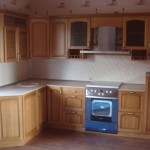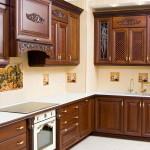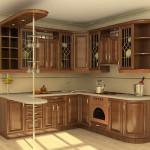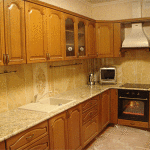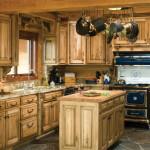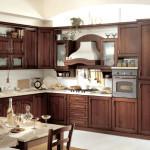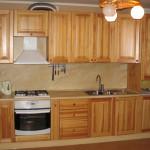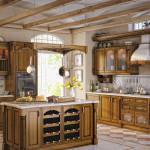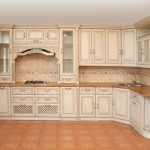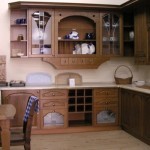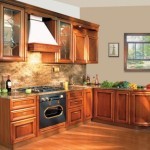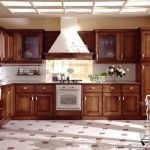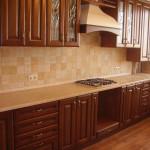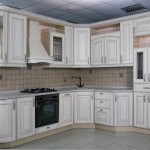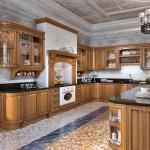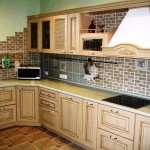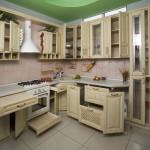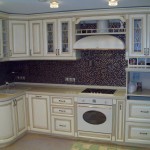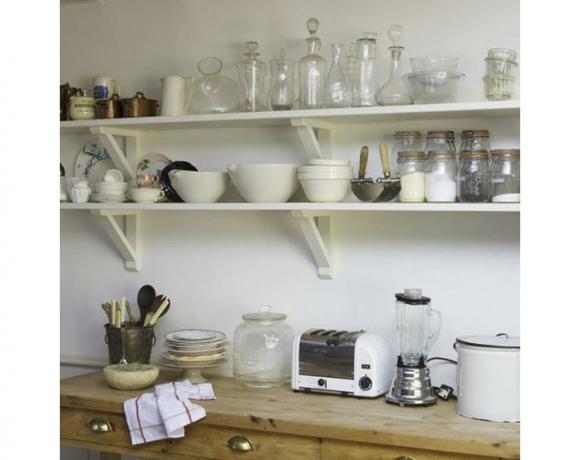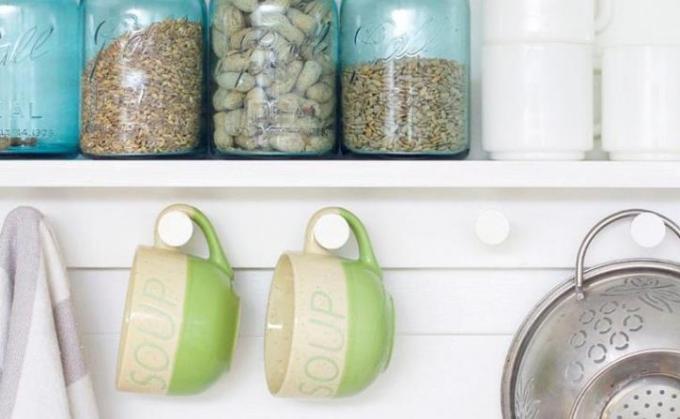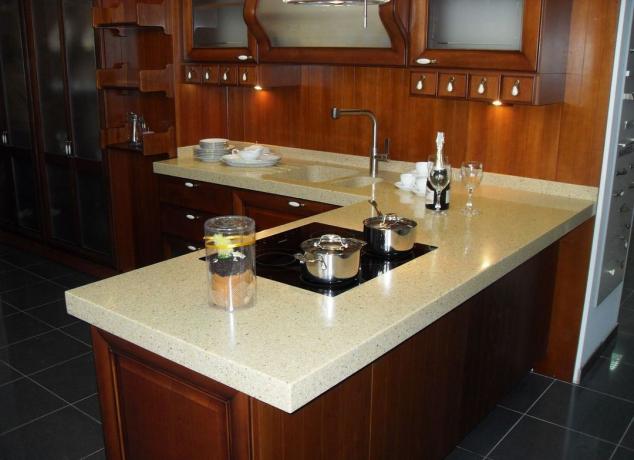Content
-
1 Everything you need to know about timber facades
- 1.1 General information
- 1.2 Wood for kitchen facades
-
2 Advantages and disadvantages of the material
- 2.1 Advantages
- 2.2 disadvantages
- 3 Manufacturing of a wooden facade
- 4 Finally
One of the most popular types of kitchen facades are kitchens with wooden facades. They are the very embodiment of style, luxury and reliability. In this article we will tell you about the key features of wooden facades, as well as provide instructions for their manufacture.

Wooden kitchen facades are an indispensable attribute of classic style
Everything you need to know about timber facades
If you are still undecided on the material for your future kitchen unit, it's time to think about wooden facades. They have a lot of advantages (though not without disadvantages) and will give the interior a bohemian chic.

Natural materials look much more spectacular than composite or synthetic counterparts
General information
Probably, no one will argue with the statement that the facade is the face of the kitchen. Therefore, the desire to choose the most beautiful material for him is quite natural. And the indisputable leader among such materials is natural wood.

The facade of the headset is the face of your kitchen, so you need to be responsible for the choice of material for it
Wooden facades for the kitchen are elite. The thing is that the cost of material from expensive species is much higher than most of the synthetic and composite counterparts used for the manufacture of cabinet cladding. And yet, despite all the high cost, wooden kitchen fronts are in steady demand.
In the furniture market, the category of wooden facades includes structures of two types:
- Solid wood. All their elements are made from natural wood that has undergone special processing. Carved facades for the kitchen are also popular - in this case, figured carving is applied to the surface of the solid wood board mechanically or even manually.

Few can compete with natural solid wood facades
- Veneered facades for the kitchen. They are slabs made of a cheaper material (for example, MDF), covered with veneer. Veneer is thin plates of natural wood, most often quite expensive species. Such facades are much cheaper than analogues from the array.

Veneer kitchen facades are cheaper, but they also look less presentable
Solid wood kitchen fronts also divided into solid (consisting of one part), and paneled (assembled from several separate elements).
We will tell you more about their design in the section dedicated to the production of facade panels.
Wood for kitchen facades
Wooden facades are made from a wide variety of wood species - both coniferous and deciduous.
Most often, they are used in their production:
- Pine;
- Oak;
- Beech;
- Alder;
- Cherry;
- Hornbeam, etc.

Due to the high strength of oak, only specialists with special equipment can use it as a material for the facade.
The choice of wood affects not only the appearance of the kitchen facade and the complexity of its production, but also the price. For example, pine structures can be made by almost every craftsman with the skills of working with wood.
But oak fronts for the kitchen require serious skills and high-quality tools, since oak is extremely durable.

Pine kitchen facades - the most budgetary option among natural materials
As for the cost, the cheapest are, as a rule, pine facades for the kitchen. Among the most expensive species are cedar, wenge and mahogany. However, the appearance of these materials is consistent with their cost.
Wooden blanks from which the facades are made must be thoroughly dried. After drying and cutting to the required size, the workpieces are treated with antiseptics - substances that prevent rotting and damage to the tree by woodworms.

Before making the facade, the tree must be treated with special impregnations
Pine facades for industrial kitchens (as well as facades made of other types of wood) must be covered with a protective varnish to protect the wood from moisture. If we make the facade with our own hands, then we need to take care of the protection from water ourselves.
Advantages and disadvantages of the material
The high cost of wooden facades requires a careful approach to their choice. If you are still undecided on the material for cladding a kitchen unit, then you should definitely learn about all the advantages and disadvantages of veneered and solid wood facades.

A wooden kitchen is worth every penny spent on it
Advantages
The main advantage that distinguishes kitchen facades made of natural wood from others is their appearance. The aesthetics of natural material is almost impossible to fully reproduce, and even veneer on kitchen facades looks less attractive.
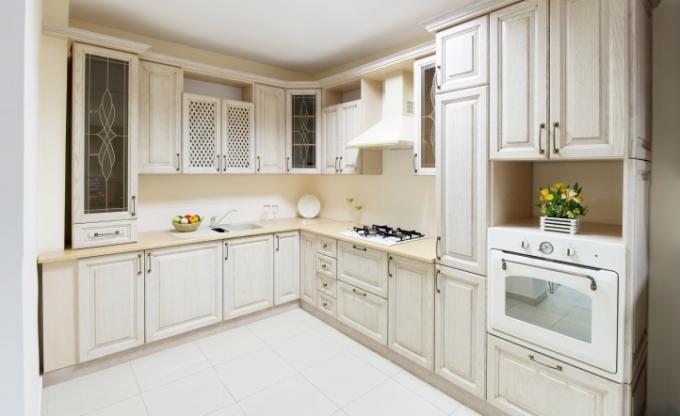
Refined appearance (photo is an example) - the main plus of natural materials
In addition, the advantages of wooden facades include:
- Sustainability. In the process of manufacturing the structure and for impregnating wood, no toxic substances are used. This makes such facades one of the most environmentally friendly cladding options for the headset.
- High strength. Choosing a headset with wooden facades, you get an incredibly strong and durable construction. With proper care, it will serve you for over a decade.

The discussed material is not only durable, but also environmentally friendly
- A wide range of. Since a great variety of wood species are used for the manufacture of such a coating, the design of the facades can be almost anything.
- Possibility of restoration. Even if the material is sufficiently damaged, it is possible to restore it and return it to its former exquisite appearance.
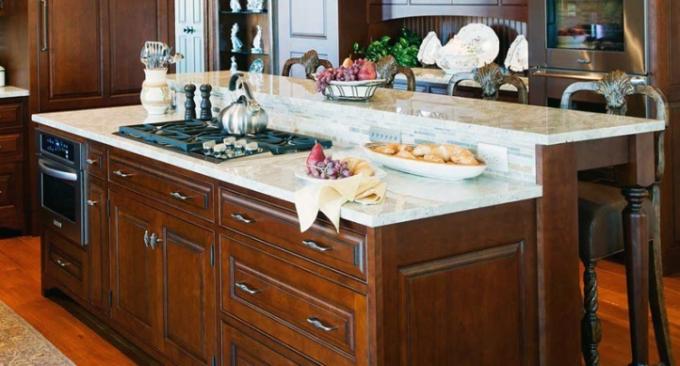
Headsets with natural facades will serve you for many years
disadvantages
By and large, the points listed below cannot be called shortcomings. Rather, it makes sense to talk about the features of natural wood facades, which should be taken into account, both when choosing them and in the process of caring for them:
- Price. The cost of facades made of natural wood is quite high. The veneered version will cost a little less, but it does not look so presentable, and is more capricious in operation.
- UV exposure. UV exposed wood flooring may slightly change its color, losing the brightness of colors. For those who want to avoid this, we recommend treating all the front surfaces of the kitchen with a varnish with a UV filter.

From exposure to ultraviolet radiation, the tree can lose its original color.
By the way, a change in the color of a wooden facade under the influence of sunlight is not a sign of marriage, which is recorded in the GOSTs for the manufacture of furniture.
Manufacturing of a wooden facade
A wooden façade is expensive. But if you have the skills to work with wood, as well as the right equipment, then you can make the original cladding for your kitchen yourself. Below is an instruction, complemented by a video, that will allow you to master this technology.

Making facades with your own hands will help significantly save your family budget
We recommend that you make your first "pen tests" from pine or other inexpensive wood - and when you "get your hands on", you can switch to a more noble material.
We will demonstrate the production of a kitchen facade using the example of a panel-type facade.

The paneled facade consists of a trim, a panel and lintels
The paneled facade consists of two main elements:
- Panels - an inner shield, the edges of which are processed with a curly cutter. The milled part of the panel of the panel is called figs.
- Strapping - a frame made of wooden planks, on the inner side of which a groove is made, into which a panel is inserted. Milling on the inner plane of the strapping is called molding.
Thanks to this design, the paneled facade copes well with temperature deformations, which is one of its main advantages.

The material must be treated with water-repellent agents.
A paneled facade is made according to the following scheme.
Illustration |
Instructions |
 |
Preparation of elements. You need to measure the height and width of the headset cabinets. Subtract 3 mm from the obtained indicators - this will be the height and width of your future door. According to the data obtained, using a jigsaw, cut out the required number of strips. |
 |
Creating grooves. Using a special molding cutter, process the inner parts of the strapping elements, choosing a groove for installing the infill and forming a groove - a molding. Sand the parts thoroughly. |
 |
Trial assembly. Assemble the door by placing the racks directly on the infill, securing them from below with the frame crossbars. If all the details are tight, you did everything right. If not, you will have to modify the spikes and grooves. |
 |
Final assembly. Assemble all facade parts using wood glue and fasteners. |
After the varnish is completely dry, you can proceed with the installation of the facade on the kitchen modules. That's it - you will have a luxurious kitchen made with your own hands.
For more detailed instructions, see the video.
Finally
Despite its high cost, the kitchen with wooden facades impresses with its exquisite appearance and durability. Now that you know what advantages and disadvantages this material has, and how to assemble a paneled facade on your own, the choice of cladding for the headset will be more balanced.
Gallery




